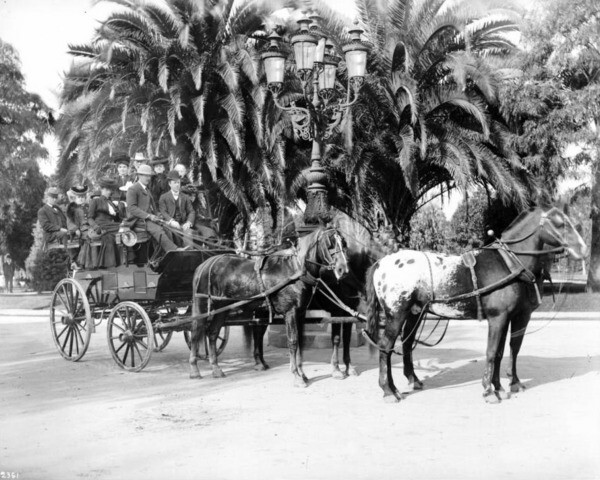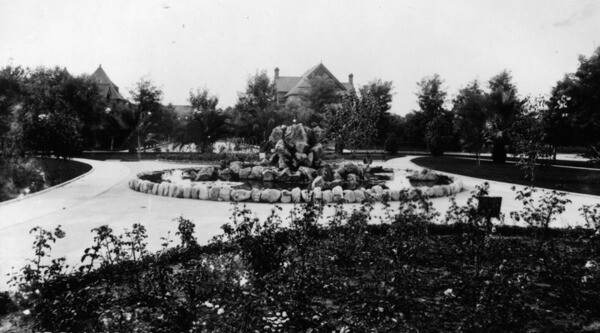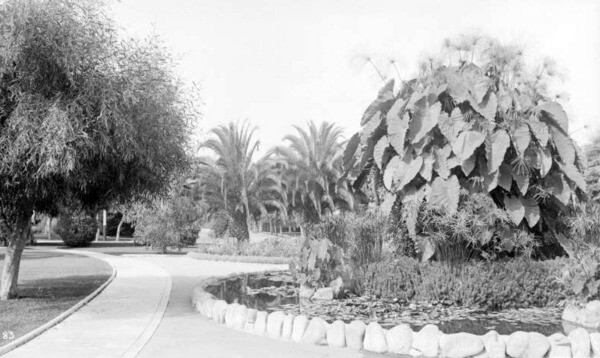St. James Park: When a Private Playground Became a Public Park

It's one of the city's oldest parks, and you've probably never heard of it. Founded as a stately outdoor retreat for the city's wealthiest residents, tiny St. James Park in Los Angeles' West Adams district has never drawn much notice. And yet this postage stamp of a park joined the roster of city parks the same years as the better known and much beloved Echo Park.
An acre of sprawling lawns and fan palms just off West Adams Boulevard, St. James Park was born in 1887 as the centerpiece of an exclusive housing subdivision of the same name. The tract's developers, J. Downey Harvey and George W. King, borrowed the name from the aristocratic playground in the heart of London -- a sign of their aspirations for the place. And despite a real estate bust, by the early 1890s the tract had indeed attracted some of the city's wealthiest residents. Elegant Victorian houses fronted the landscaped park on all four sides. Residents paraded down the park's drives on their horse-drawn rigs and set up a tennis court on its lawn.
In 1891, Harvey and King offered the park to the city for unknown reasons -- perhaps to avoid maintenance costs. The city accepted, Harvey and King executed a quitclaim deed, and St. James Park became Los Angeles's seventh municipal park. Though distant and inaccessible to most residents, the park benefited from the city's care over the next few years. A stone fountain, built from rocks collected from the Arroyo Seco, rose from the middle of the tennis court. That change aroused some controversy among the park's neighbors, but there was little objection to the fan palms, roses, and giant elephant ear palm the city added by 1896 -- 14,200 plants in all.








L.A. as Subject is an association of more than 230 libraries, museums, official archives, cultural institutions, and private collectors. Hosted by the USC Libraries, L.A. as Subject is dedicated to preserving and telling the sometimes-hidden stories and histories of the Los Angeles region.


